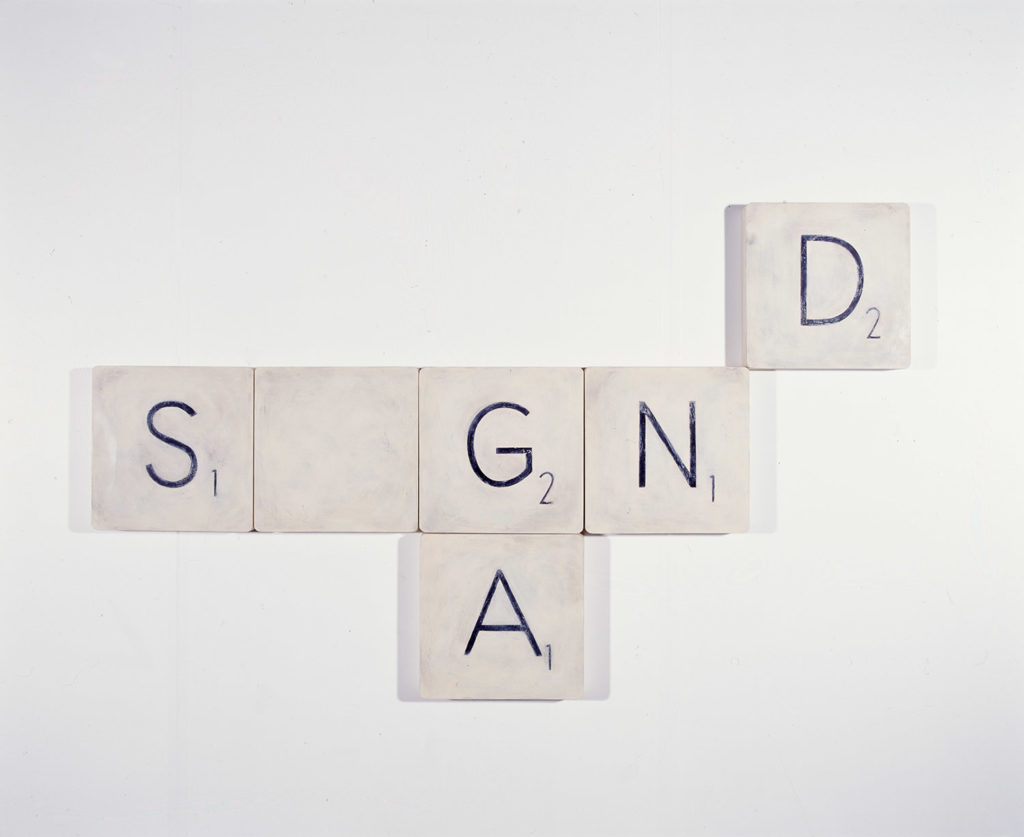ARTISTS Stephen Bambury, Mark Braunias, Glenys Brookbanks, L. Budd, Graeme Cornwall, Shane Cotton, Julian Dashper, Tony de Lautour, Luise Fong, Dick Frizzell, Max Gimblett, Kirsty Gorman, Bill Hammond, Chris Heaphy, Ken Heyes, John Hurrell, Simon Ingram, Richard Killeen, Tony Lane, Judy Millar, Simon Morris, Julia Morison, Robin Neate, Megan Phillips, Seraphine Pick, Patrick Pound, Jude Rae, John Reynolds, Peter Robinson, James Ross, Michael Shepherd, Michael Stevenson, Sanjay Theodore, Geoff Thornley, Isobel Thom, Richard Thompson, Barbara Tuck, Ronnie van Hout, Gordon Walters, Denys Watkins, Ruth Watson CURATOR Allan Smith PUBLICATION essays Allan Smith, Leigh Davis
Suggestions of signs, fragments of half-remembered stories, bizarre scenarios, assertive abstractions ...
A Very Peculiar Practice is the first show by City Gallery's new curator Allan Smith and it's the largest survey of contemporary New Zealand painting in over a decade. Featuring fifty-three works by forty painters, all made during the 1990s, it manages to be highly inclusive yet curatorially specific. The show is divided into rooms: one is 'image-rich', one is dominated by minimalist abstraction, another is a 'brooding melancholic room' devoid of colour. Works are arranged in a compare-and-contrast fashion, with formal strategies and motifs ricocheting between works: here it's crosses, there it's stripes, over there, ensembles of parts, etc.
The fragmentary nature of perception is reflected in fractured compositions; many works are ensembles of parts. With its rearrangeable painted shapes, Richard Killeen's cut out Seven Black Combs (1991) offers a starting point for considering post-modern fragmentation and 'sign' in New Zealand painting. Ruth Watson's S_GNDA (1992) consists of five small square canvases resembling Scrabble tiles. Ronnie van Hout's teasing diptych, I'm with Stupid, Stupid's with Me (1993) is a pair of signs leaning against the wall, referring to each other. But who is stupid here: the art, the artist, or the audience? Perhaps all three?
In his catalogue essay, 'A Very Peculiar Practice: A User's Guide', Smith advises, 'The paintings require careful looking. Like a newcomer to a city, we must read the visible signs, nominate clues and draw together fragments of meaning in order to gain insight into the many worlds revealed to us.' He says, 'The paintings in the exhibition are about making sense of our lives as city dwellers and the way we interpret our way through a mass of incomplete visual messages and signs. We have to read cultural and social patterns of behaviour, remains of partially forgotten histories, media imagery, neon logos, and advertising hoardings.' He tells the Dominion, 'I'm interested in artists dealing in issues with cross-cultural material, trying to come to terms with new social and cultural patterns in the world.'
Smith's show is generous. It places relative newcomers like Sanjay Theodore, younger artists like Julian Dashper, Seraphine Pick, Peter Robinson, and less known figures like Graeme Cornwall, alongside establishment painters, including Gordon Walters, Max Gimblett, Richard Killeen, Stephen Bambury, and Bill Hammond. All the artists are presented as part of the same conversation. In the Sunday-Star Times, Mark Amery writes, 'You'll find no landscapes, still lifes or studies of the figure in the form you'd expect. Instead, there's a diverse range of symbols, patterns, textures, and rhythms, with paint used as a personal signature for an idea.'
Several reviewers single out Denys Watkins's enigmatic Lemur (1994) for praise. In the Evening Post, James Mack writes, 'The more I see of Watkins in recent times the more I am conscious that out of his graphic past he has become one of this country's great painters.' Shane Cotton's Te Kau Mia Ono (1994) is also described as a 'knock-out' and Barbara Tuck as a painter to watch.
Reviewers mostly characterise the show as humble, unassuming, polite yet intelligent. Listener reviewer Justin Paton is less kind, saying, 'Style-wise, A Very Peculiar Practice is a Babel.' It suffers from 'a bad case of good taste ... yet again, ye olde institutional faves hold the stage. It's the Cool School all the way.' He adds, 'Just over a decade ago in these pages, Lita Barrie cast a skeptical eye over the mother of all surveys of New Zealand art Content/Context and announced the arrival of a new class of art object: brooches for boardrooms, spawned by a frisky new market. You could say something similar about A Very Peculiar Practice, except that this time the work seems made to fuel a lumbering institutional machinery.' This is 'art made for no deeper reason that to be included in state-of-the-art surveys like this one.' Ouch.











































































































































